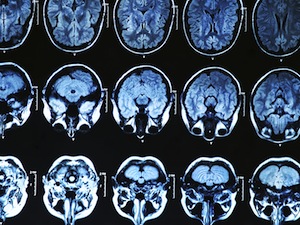
The longer an epileptic seizure persists, the more dangerous it is for the patient. Prolonged epileptic seizures lasting five to 10 minutes or more, known as status epilepticus, can lead to brain damage or even death, especially if they are accompanied by convulsions. They are relatively rare, occurring in 50 per 100,000 people a year, but 20 percent of those affected die. Status epilepticus is most common in children and the elderly, and only about one-quarter of the people who experience it have a history of epilepsy.
In the United States, benzodiazepines are the treatment of choice for status epilepticus. The efficacy of this fast-acting, long-lasting class of medications has been well documented. However, according to neurologist Jaideep Kapur, MD, PhD there is one major problem. “In about one-third of the cases of status epilepticus, benzodiazepines are ineffective,” he says. “Currently, there is no evidence-based consensus about second-line treatment.”
Measuring Specific Outcomes
With a $21.4 million grant from the National Institutes of Neurological Disorders and Stroke, Kapur is collaborating with a group of experts in status epilepticus to organize the Established Status Epilepticus Treatment Trial (ESETT) in an effort to determine which of the three most common second-line treatments—fosphenytoin, levetiracetam andvalproic acid—is most effective. Forty medical centers belonging to the Neurology Emergencies Treatment Trials Network and the Pediatric Emergency Care Applied Research Network have agreed to participate, and the trial is now scheduled to start in fall 2015. Kapur and his colleagues will use the following outcomes to evaluate the three medications:
- Clinical cessation of status epilepticus, without recurrent seizures, or use of additional anti-seizure medications within 60 minutes of the start of drug infusion
- Occurrence of life threatening hypotension or cardiac arrhythmia
- Time to termination of clinical seizures
- Mental status at 60 minutes following start of drug infusion
- Intubation or admission to an intensive care unit within 24 hours of enrollment
- Mortality
Another important objective is to determine the rate of children’s adverse reactions to these drugs. “One of the pitfalls of drug development is that drugs are typically tested first in adults and only then in children,” Kapur says. “We want to make sure that children will be included in our study from the beginning, so those treating kids will have the necessary information.”
A Flexible Design
Kapur and his colleagues plan to recruit a maximum of 795 patients above the age of 2, of which approximately 40 percent will be children. Because status epilepticus is relatively rare, the trial could last as long as five years, assuming each medical center enrolls four to six patients a year. In response, the investigators have adopted a Bayesian experimental design, which may allow them to shorten the trial by incorporating ongoing statistical analysis of the medications’ performance as the trial progresses. “We can allocate patients preferentially to the drug that is doing the best,” Kapur says. “We are not so much interested in the losers as in the winners.”
Each of the three drug candidates offers unique advantages. The oldest of the three drugs, fosphenytoin had initially been the drug of choice for status epilepticus, and even today, two-thirds of U.S. patients requiring second-line treatment receive it. Levetiracetam was introduced less than two decades ago. It is a very safe drug and easy to administer, but there is limited information about its effectiveness. Valproic acid is more commonly used outside the United States, and data from other countries suggest it may be more effective than the other two alternatives.
A Community Effort
Currently, Kapur and his colleagues are in the process of demonstrating to the Food and Drug Administration that they can safely produce the drugs needed for the trial. They are also working to satisfy FDA’s exception-from-informed-consent requirements. This exception is necessary because patients enrolled in the study—anyone age 2 or older who has not responded to benzodiazepines—will not be able to provide informed consent. As part of this process, they are meeting with the Epilepsy Foundation and local patients groups to make sure they have no objections to the trial and to identify potential patients who might not want to participate.
Launching a trial of this type requires years of work, but Kapur is undaunted. “The information we gain will be worth the effort because it will save lives,” he says.
Read more about UVA’s Comprehensive Epilepsy Program.